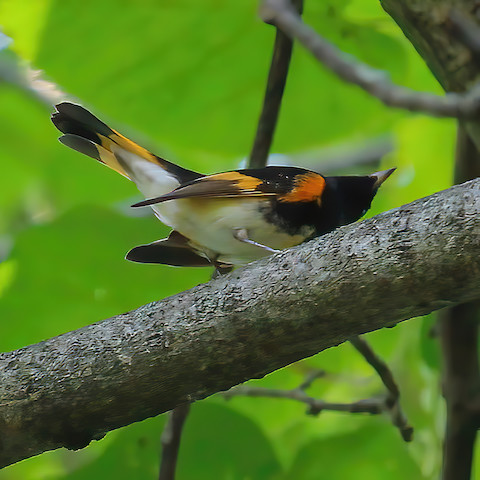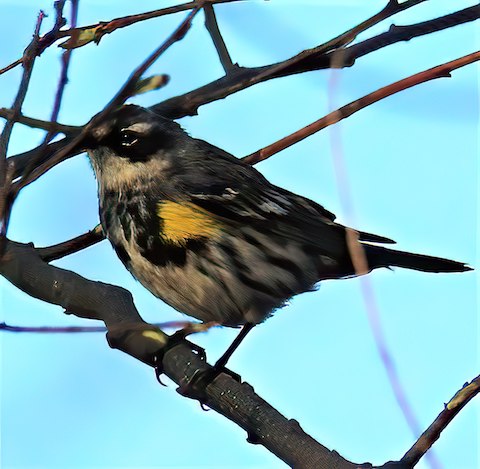
I’m writing this column on the evening of the warmest day of the year so far, where the temperatures peaked in the low 80s after having snowed earlier in the week. A strong south wind brought these warm, nearly tropical, temperatures to the Fox River Valley. Those same strong south winds have also brought up other visitors from the near tropics: a plethora of birds migrating to the north to their warm-season ranges. Last month, my blog focused on one of the largest birds in North America and their spring migration through our area: the American White Pelican. In this column, I’ll focus on a group of much more diminutive, but nevertheless spectacularly beautiful birds: the many species of warblers, kinglets, and other small migratory birds that, at least for a brief time in the spring and fall migration period, make the Fox River Valley their home.
Technology Assists in Birding
Cornell University sponsors a wonderful site for birders called eBird. One of the features of the eBird site is a real time migration tracker named BirdCast Migration Dashboard. The tracker utilizes weather radar to estimate the number of birds migrating over any county in the United States at any given time. As I had been hiking at the Hoover Forest Preserve in Yorkville in Kendall County, Illinois, I logged into the eBird migration tracker site a little after midnight to see what kind of migration activity was going on. I learned that approximately 241,000 birds have passed over the county since sundown and that among the birds most likely to be migrating tonight included: Ruby-crowned Kinglets, Palm Warblers, and Yellow-rumped Warblers. These were species that I observed and photographed in the preserve today. The eBird site provides a wealth of information on birds all across the world and the site provides a great resource for local birders interested in identifying and finding birds in the Fox Valley.
The Jewels of the Forests and Fields
While this spring has seen the trees and wildflowers being a little late in leafing and blossoming, other living jewels have provided some lovely splashes of color to the environs of our Fox River Valley! These little jewels are the various species of warblers and other small but beautiful birds, that are migrating back to or through our area right now from their southern, sometimes tropical, wintering areas. These little birds bring a palette of bright color to our still primarily brown and grey woods and fields. It’s a real thrill to be on a hike and see glimpses of these beautiful birds flitting through the budding trees in search of emerging insects like midges for a snack. These little birds are quick, agile flyers and don’t stay still for long. They can be a challenge to closely observe and photograph because of this. Patience and a little strategic planning can reap great rewards in getting close looks at these beautiful little birds



Kayt Casey, Oswego, IL.

Patience and Planning Reap Rewards!
Over the years I’ve spent in the outdoors, I’ve come to find that birds and other wildlife are creatures of habit, just like us! I’ve found that in the spring, the migrating warblers seem to like to rest and feed in areas that are wooded with numerous trees and shrubs that are close to water. These areas provide the birds with a ready source of food and shelter. Lucky for us, the shoreline of the Fox River provides this kind of habitat all throughout the Fox Valley. In my hikes at the Hoover Forest Preserve in Yorkville (my favorite haunt), I’ve found many of the warbler species that I’ve observed on the trails that are closest to the river pass through thick woods and shrubbery. Finding a spot like this and then patiently staying still and waiting have paid off for me as small flocks of birds of the same species seem to pass through in waves. This spring, Yellow-rumped Warblers were the first to arrive, followed by Palm Warblers, and most recently Yellow Warblers. As April transitions into May, more and more beautiful warblers of many different varieties (as well as other beautiful birds) will transit the Fox Valley.
If you want to see some of these beautiful birds in person, now is the time to find them. Get out and find some likely habitat along our beautiful Fox River and patiently wait and watch what’s happening around you in nature. You might be surprised at what you see!
Until next time, enjoy the natural treasures of our beautiful Fox Valley!


